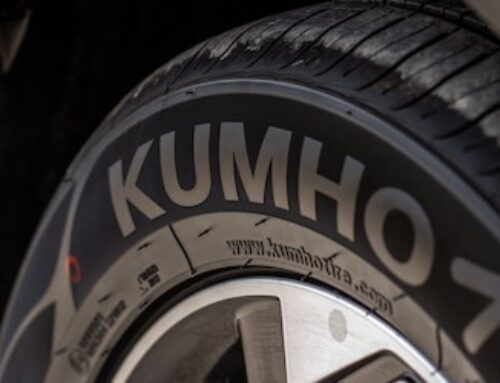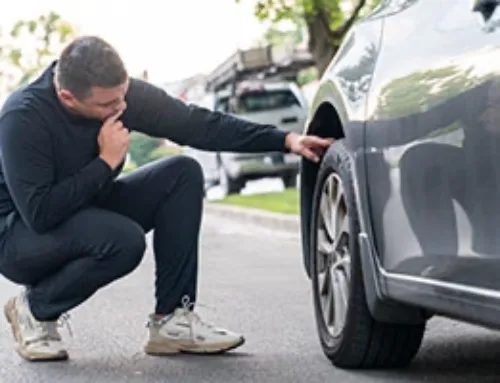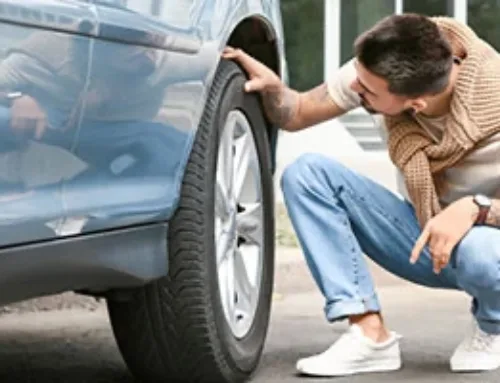Table of Contents
Imagine a situation: Early morning, you’re making tracks to work and notice that one of your tires is almost flat, and you won’t be able to make it to the nearest gas station. You’re combing your garage, but all you find is a bike pump. Will it work for your car’s tire? The short answer is “Yes.” A good old bike pump and some muscle effort will do the job. But which pump can cover the task? How long does it take to pump the wheel manually? And are there any life hacks to complete the mission? Read on and dash to the checklist we’ve prepared for you.

Can I use any bike pump for my car’s tires?
First, you want to find out if your pump fits the car valve since not all bike pumps will work (no worries, a slight upgrade will help). Check the type of valves you have on your bike. Generally, there are two types of valves–Shrader and Presta.
Shrader valves have a bigger diameter and are a gold standard for most of today’s cars. They are also used in bikes (usually, you’ll find them on the budget-friendly mountain, hybrid, and city bikes). So probably, your car has Shrader valves.
To understand which type of pump you have, take a quick look at the pump’s mouth. If you see a small pin inside, there’s good news—your pump will fit.
If your bike is equipped with Presta-type valves, you’ll need an adapter to fit it to the car tire. Apparently, you’ll need one since most of today’s bikes have Presta valves that allow bike tires to hold higher pressure. No big deal; you can pick an adapter in the local hardware store or bike shop.
Once you ensure the pump fits your car valve, you can proceed to the next step.

Are there any lifehacks to pump my tires manually?
When you inflate a wheel, you must overcome the air pressure resistance inside the tire. The higher the pressure, the more effort it takes you to pump. If your car stands on the ground, its weight pushes on the wheel, increasing the air pressure inside. Therefore, if your vehicle is parked, it’ll take you too much time and effort to pump a tire. To minimize this resistance, you’ll need to either remove the wheel or jack up your car (it’ll take you a couple of minutes and save you much time). Make sure you’re doing it safely before you proceed to pumping.
Don’t let the best tire deals & tips roll by!
Subscribe to our newsletter
How long does it take to pump a car tire with a bicycle pump?
Engineering enthusiasts have done tests that say it takes 15-20 minutes to pump your car tire with a standard bike pump. I tried to reproduce the experiment, and I can say that if you’re not the gym’s boss, it will be quite an exercise for your muscles because 20 minutes of intensive manual pumping is not something most of us do every day. If so, you’ll want to take a break or two. In my case, it took me about 50 minutes to pump up one wheel, which slightly differs from what enthusiasts say. Here, I need to add that my tire was deflated almost completely. It won’t take long if you want to add a little pressure.
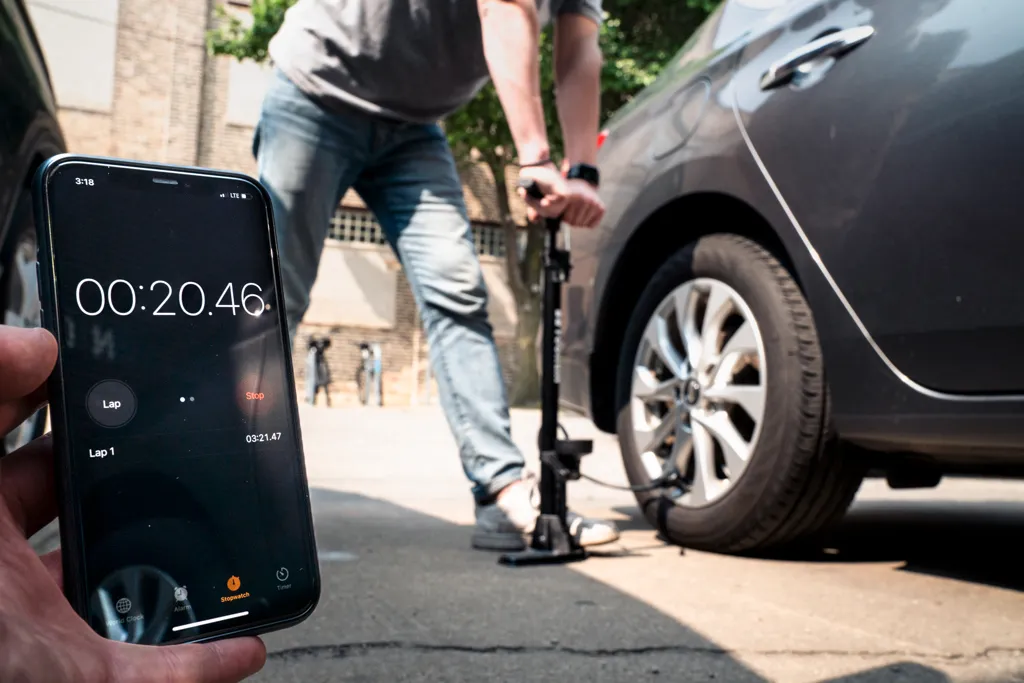
How much pressure does the car tire require?
Pressure gauge depends on multiple factors–from car model specs to season. For most passenger cars, the recommended pressure falls between 32 and 35 psi (pounds per square inch) in the tires when they’re cold. If you start in the morning, you want your tires to be slightly under-inflated since the tires will heat up while you’re driving, leading to air expansion and pressure increase. Anyway, both under-inflated and over-inflated tires can cause loss of control and even traffic incidents. To learn the recommended tire pressure for your car, refer to the owner’s manual. Sometimes, you can find this info on a sticker on the inside of the driver’s door.
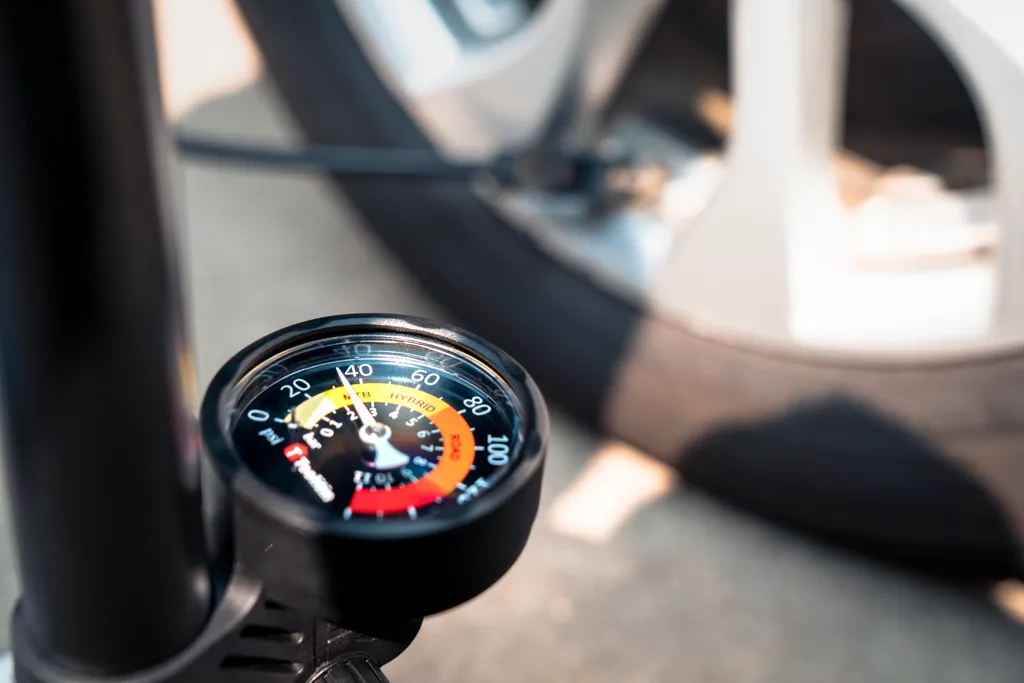
When finished, check the air pressure in your tires. Some bike pumps have built-in pressure gauge. Otherwise, you’ll need an external gauge. Many consider external devices more accurate, so you might want to check them out in your hardware store or at a gas station.
Can I take off right away?
Before you take off, double-check if you’re all set. If you have removed the wheel, test the bolt stretch. Also, walking around the car and peeking under its bottom is good practice to see if you have left something on the ground.
Pumping your tire is a temporary solution to make it to your office or the nearest gas station. If the air sleeps out of your wheel, pumping it isn’t the remedy, and the problem will likely surface again. Therefore, get to the service station or tire shop to eliminate the problem and prevent any possible accidents.
Now, jump into the car, and off we go!
Checklist for pumping your car with a bike pump
Today, pumping your car tires manually, especially with a bike pump, is non-typical and challenging. However, if you’ve faced this issue, take the following steps:
- Make sure your bike pump fits with your tire valve. Presta-type valves are more typical of bikes and require an adaptor.
- Jack up the car or remove the wheel to reduce the pressure added to your car’s weight.
- Start pumping, and be ready to spend about 30 minutes.
- When finished, check the air pressure.
- Lower your car or set back the wheel.
- Double-check if your car is ready.
- Visit the nearest service station ASAP to diagnose the issue and fix it.
Frequently Asked Questions
Can I use any bike pump for my car’s tires?
Yes. You can use a standard bike pump to pump a car tire. However, you’ll probably need a Presta-to-Shrader adapter since most bike and car tires are equipped with valves of different types.
Are there any lifehacks to pump my tires manually?
The pumping becomes much easier and quicker if you jack up your vehicle or remove the wheel. The idea is to minimize the additional pressure inside the tire caused by your vehicle’s weight.
How long does it take to pump a car tire with a bicycle pump?
Engineering enthusiasts say it takes 15-20 minutes to manually pump a car tire with a bike pump. If the pressure is low, it can take longer (about 50 minutes).


